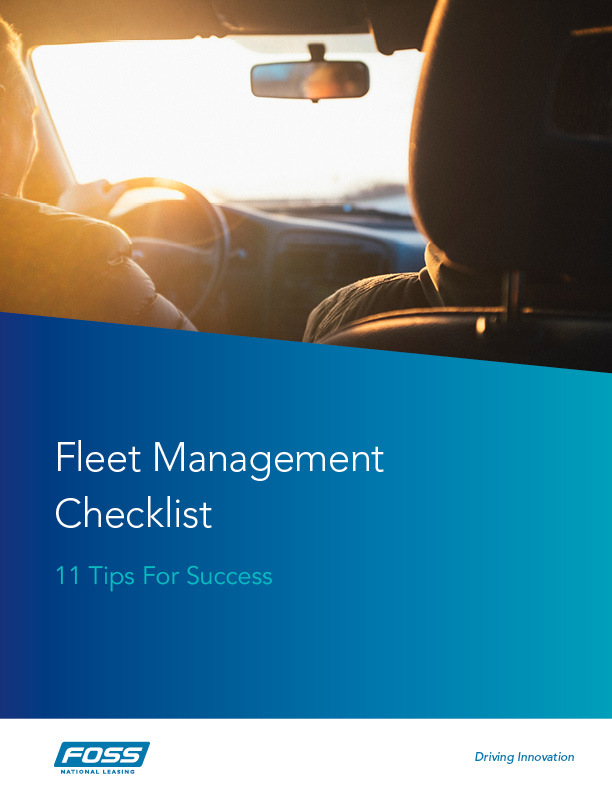
Have you secured the most economical leasing agreement for your fleet vehicles?
You might confidently say "yes," having conducted thorough research and considered all available options. However, there are two critical questions that may reveal the true answer:
- Do you know your implicit leasing rate?
- Do you have access to the vehicle’s equity?
If your response to both questions is YES, then congratulations, you have indeed obtained the best leasing option available. However, if your answer is negative, then the following information will be useful in ensuring that you maximize the money spent on your fleet vehicles.
What Is An Implicit Rate Of Lease?
The rate indicated in your leasing agreement typically does not account for all your leasing expenses. In addition to the visible costs, there are also hidden (implicit) costs, which could include acquisition fees, administrative fees, taxes, or any other expenses related to leasing. As a result, your implicit interest rate could be higher than the posted interest rate on your lease.

In order to effectively compare different leasing options, it is important to calculate the implicit leasing rate.
The implicit lease rate represents the actual interest rate being charged on a lease, factoring in all associated costs and fees. This includes the interest rate on the lease itself, as well as any fees, charges, or costs related to the lease, such as acquisition fees, administrative fees, and taxes.
Unfortunately, the implicit lease rate is not always disclosed by vehicle leasing providers and can be challenging to determine without all the necessary information. To accurately calculate the implicit lease rate, it is recommended to request the following information from your leasing partner:
- Monthly payment: The amount you are required to pay each month for the lease.
- Capital cost: The total cost of the vehicle, including any associated fees and taxes.
- Term length: The length of the lease in months.
- Residual value: The unamortized value of the vehicle at the end of the lease.
By having access to this information, you can get a complete understanding of your leasing offer and make an informed decision that aligns with your financial goals.
Calculate the true price of your leasing agreement using this straightforward calculator.
What Is the Residual Value Of The Vehicle?
The residual value is the expected value of the vehicle at the end of the lease term, taking into account its depreciation.
Buying A Vehicle Based On Its Residual Value Vs. Its Market Value
As you are aware of the true price of your lease agreement, let's examine another crucial aspect of a favourable leasing agreement. It is whether you have the option to purchase the vehicle at its residual value or its true market value at the end of the lease.
You should have access to purchase the vehicle at its residual value by the end of the lease term. However, some leasing companies may restrict you from buying the vehicle at its true market value, which in the current market situation is substantially higher than the residual value. It usually happens for two reasons:
- Firstly, the residual value might not be disclosed, meaning that the lessor would have to come up with a buyout value when asked, which can be problematic.
- Secondly, if the lease is not an open lease, then the customer is obligated to purchase the vehicle at its fair market value.
In such cases, if you buy at the true market value, you will essentially forfeit any equity that may be available in the lease. On the other hand, if you opt to purchase the vehicle at its residual value, you can sell it at the true market value to another buyer and recover the difference (i.e., equity).

How Can You Maximize The Benefits Of A Lease?
Once the lease ends, you are not the vehicle owner. What happens when the contract ends depends on the provisions stated within the lease. You may have the following options:
- Return. The lessor will dispose of the vehicle on your behalf and you would be responsible for the gain or loss on sale depending on the lease end residual value and what the current fair market value is at the time of return.
- Lease again. Extend the lease or opt for re-leasing the vehicle for a new term if allowed by the lessor.
- Buy or sell. Purchase the vehicle or arrange for a third party to purchase the vehicle if the lessor provides that option. The purchase price should match the lease-end residual value disclosed in the lease agreement.
Keep in mind that if you don't have access to the vehicle's value, you're essentially just renting it. While this may seem like a safe option, it limits your potential profits.
Final thoughts
Unfortunately, many lessors are not fully transparent about all available options to their customers. They often limit their offerings to closed-end leases or fail to disclose the residual value of the vehicles. As a result, these companies miss out on the opportunity to benefit from the high resale values for used vehicles, which are currently at an all-time high. By opting for an open-ended lease, companies can recapture equity and make the most out of their vehicle investments.
At Foss, our commitment to full transparency means that we not only advise our clients on the most advantageous leasing options for their individual needs, but we also assist in maximizing the return on their fleet vehicles through the reselling process.
Get to Know the Author
Hussain Dhanani has worked in the fleet management industry for 15+ years. He started working in the industry as a Client Service Representative in 2006 and now enjoys his current role as Regional Director, Western Canada. Hussain has a passion for people and enjoys being able to help companies achieve their fleet management goals. When Hussain is not working, he is most likely planning his next trip to a new country.
Meet our team







